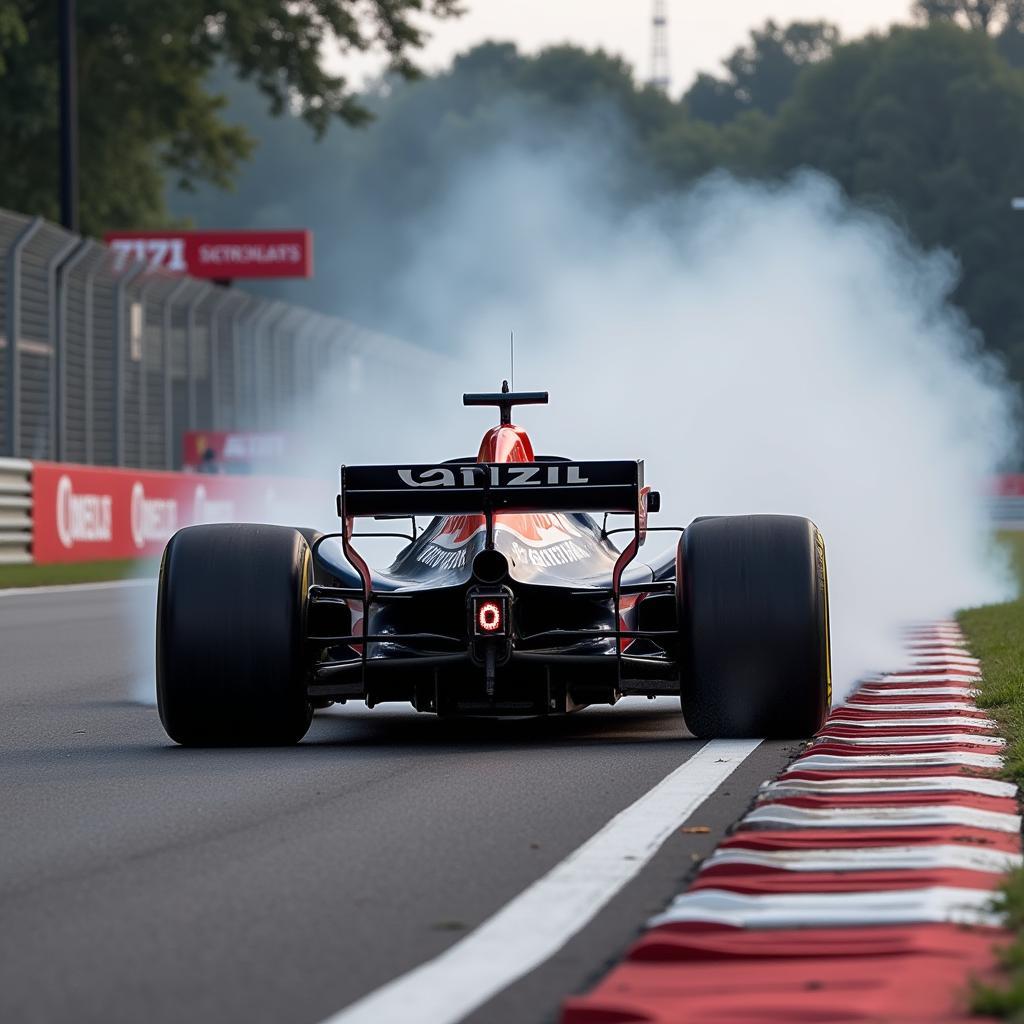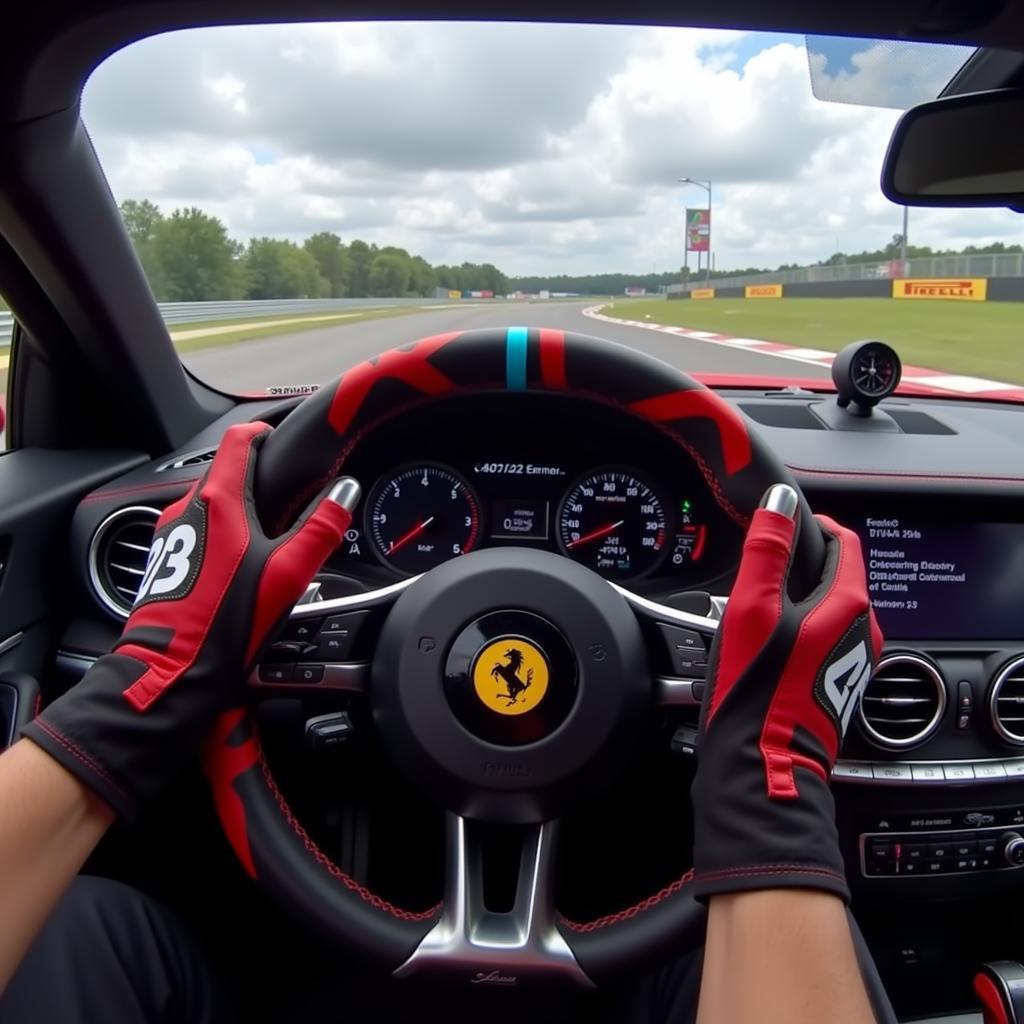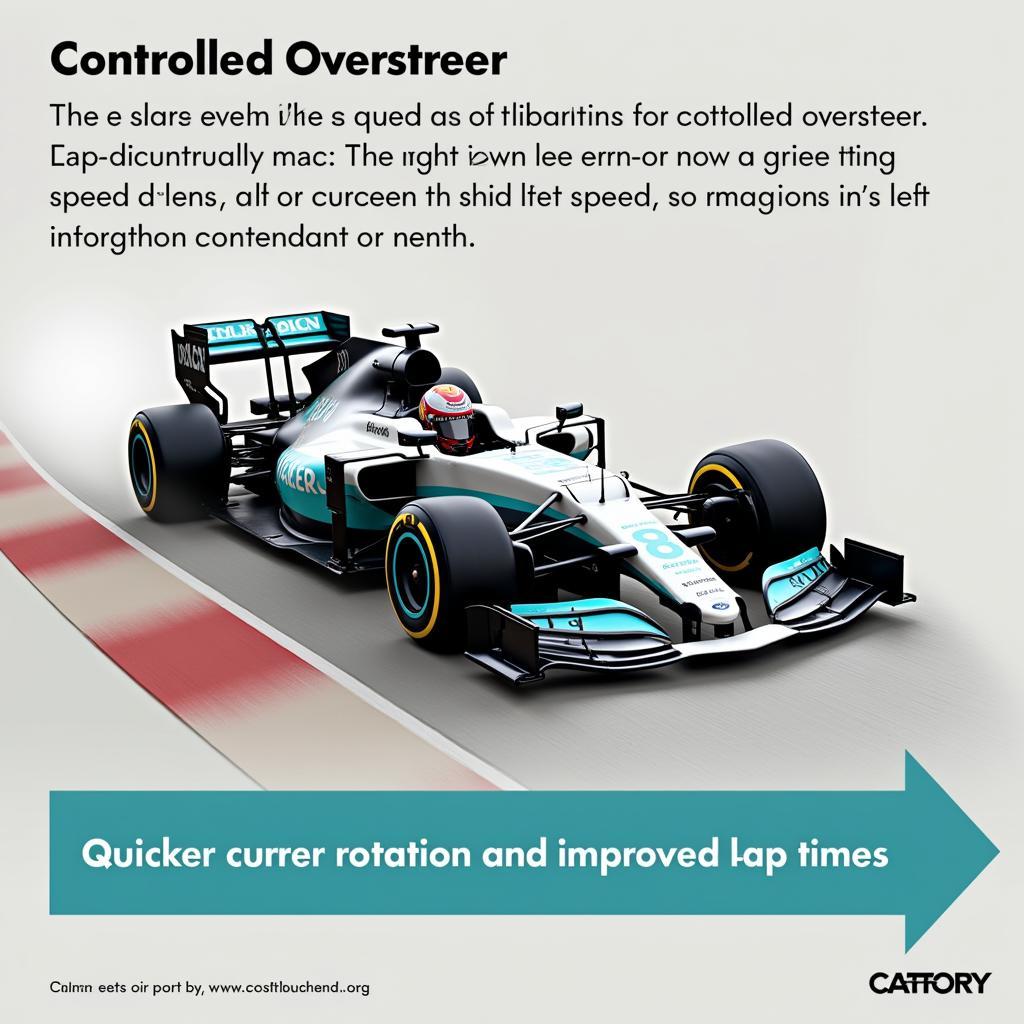F1 Oversteer is a crucial aspect of driving a Formula 1 car at its limit. Understanding how to control and even utilize oversteer can be the difference between a winning lap and a spin into the gravel trap. This article will delve into the intricacies of F1 oversteer, exploring its causes, control techniques, and how to turn it into your advantage.
What Causes F1 Oversteer?
Oversteer occurs when the rear tires lose grip before the front tires, causing the rear of the car to rotate faster than the front. Several factors contribute to this phenomenon, including aerodynamic balance, suspension setup, tire wear, and driver input. A sudden lift of the throttle or aggressive braking mid-corner can also induce oversteer, shifting the weight balance forward and reducing rear tire grip. Even track conditions like temperature and humidity play a role, affecting the tires’ operating window and grip levels.
Many drivers, especially newer ones, fear oversteer, perceiving it as a loss of control. However, with proper technique and understanding, F1 oversteer can be managed and even exploited for faster lap times. Being able to rotate the car quickly into a corner can shave precious milliseconds, especially in tight corners. This is where the skill of a driver truly shines, turning a potential hazard into a performance advantage.
 F1 car demonstrating oversteer with a significant rear slip angle
F1 car demonstrating oversteer with a significant rear slip angle
Controlling F1 Oversteer: Techniques and Tips
Controlling oversteer requires quick reactions and precise steering inputs. The primary method involves countersteering, where the driver steers into the direction of the slide to realign the car. This requires a delicate touch and smooth inputs to avoid overcorrecting and creating a pendulum effect. Throttle control is equally crucial. Lifting off the throttle too abruptly can exacerbate the oversteer, while gently modulating the throttle can help stabilize the car.
Understanding your car’s setup is also key. Adjustments to the car’s aerodynamics, suspension, and differential can influence its handling characteristics and the likelihood of oversteer. For instance, a stiffer rear suspension can increase stability but also make the car more prone to sudden snaps of oversteer. Practicing in simulators and during testing sessions allows drivers to familiarize themselves with their car’s behavior and fine-tune their reactions. Consistent practice and a deep understanding of car dynamics are essential for mastering oversteer control.
 F1 driver countersteering to control oversteer
F1 driver countersteering to control oversteer
Another important factor in managing oversteer is understanding the track. Knowing the characteristics of each corner, its camber, and the grip levels available at different points on the track is vital. This allows drivers to anticipate potential oversteer moments and prepare accordingly. For example, knowing a specific corner has low grip due to a change in asphalt can help the driver adjust their approach and avoid sudden surprises. This knowledge, combined with consistent practice, transforms oversteer from a threat into an opportunity.
Turning Oversteer into an Advantage
In the hands of a skilled driver, F1 oversteer becomes a tool for achieving faster lap times. By inducing controlled oversteer, a driver can rotate the car quickly into a corner, reducing the time spent transitioning from braking to accelerating. This technique, often seen in slow-speed corners, requires precision and confidence. The key lies in finding the perfect balance between rotation and grip, maximizing corner entry speed without sacrificing exit speed. This technique requires extensive practice and a deep understanding of car dynamics, often honed over years of experience.
You can check out our guides on f1 manager 2023 miami setup and barcelona f1 2023 setup to understand more about car setups and how they can impact oversteer.
 F1 car demonstrating controlled oversteer for faster corner entry
F1 car demonstrating controlled oversteer for faster corner entry
Conclusion
F1 oversteer is a complex yet essential aspect of driving a Formula 1 car at its peak performance. Understanding its causes, mastering control techniques, and learning how to use it to your advantage are crucial for achieving faster lap times. It’s not just about avoiding a spin; it’s about utilizing the car’s dynamics to extract every millisecond on track. While daunting at first, conquering F1 oversteer separates the good drivers from the greats. Remember, practice and understanding are key. F1 oversteer isn’t an enemy; it’s a tool waiting to be mastered.
FAQ
- What is the difference between oversteer and understeer?
- How can I practice controlling oversteer safely?
- What are the common mistakes drivers make when dealing with oversteer?
- How do professional F1 drivers use oversteer to their advantage?
- Can simulator training help improve oversteer control?
- How does track temperature affect oversteer?
- What setup changes can I make to reduce or increase oversteer?
If you’re interested in exploring other driving techniques, check out our article on drag and drift.
Need further assistance? Contact us 24/7 at Phone: 0902476650, Email: vnggame@gmail.com or visit us at 139 Đ. Võ Văn Kiệt, Hoà Long, Bà Rịa, Bà Rịa – Vũng Tàu, Việt Nam.





